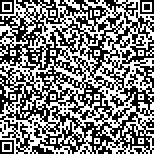| 引用本文: | 吴伟国,栗华,高力扬.人体步行捕捉下的双足机器人跟随步行与实验[J].哈尔滨工业大学学报,2017,49(1):21.DOI:10.11918/j.issn.0367-6234.2017.01.003 |
| WU Weiguo,LI Hua,GAO Liyang.Follow-walking motions of a biped robot and its experimental research based on human walking capturing[J].Journal of Harbin Institute of Technology,2017,49(1):21.DOI:10.11918/j.issn.0367-6234.2017.01.003 |
|
| 摘要: |
| 为深入研究服务型仿人机器人实时跟随人步行的问题,提出了基于人体步行运动捕捉的双足机器人步行样本生成方法,并进行了机器人-人跟随步行实验. 对PS三维运动捕捉系统在线获取的人体步行样本进行运动学匹配并考虑机器人关节极限约束条件后,得到机器人步行样本,构建机器人仿人步行的样本库;根据笛卡尔空间和关节空间内的运动参数定义机器人与人的步行相似度综合评价,提出基于相似度评价的在线样本检索方法,以“关节角距离”为评价选取拼接点,实现样本在线拼接的样本过渡方法,解决了机器人跟随人进行变速步行的问题;完成了双足机器人跟随不同人进行稳定步行的实验,跟随过程中的距离误差不超过±52 mm,跟随结束后的位置误差不超过±10 mm.
|
| 关键词: 仿人双足步行机器人 跟随步行 步行相似性评价 步行样本切换 运动捕捉 |
| DOI:10.11918/j.issn.0367-6234.2017.01.003 |
| 分类号:TP242.6 |
| 文献标识码:A |
| 基金项目:国家高技术研究发展计划(2012AA041601) |
|
| Follow-walking motions of a biped robot and its experimental research based on human walking capturing |
|
WU Weiguo,LI Hua,GAO Liyang
|
|
(School of Mechatronics Engineering, Harbin Institute of Technology, Harbin 150001, China)
|
| Abstract: |
| Respect to the issue of serving humanoid robots following human, walking pattern generation based on human walking capturing is studied, and experimental study of following walking between a biped robot and human is conducted. Considering the motion capability limitation of the robot, human walking patterns obtained online by PS three-dimensional capture system are matched to the robot in kinematics aspect to generate robots’ walking patterns and to build a library for them. Similarities between the robot and human are defined by parameters in both the Cartesian space and the joint space. The similarity based method of choosing walking patterns online and the “joint angle distance” based method of pattern transition are proposed to solve the problem of following walking with varying velocity. Finally, the experiments of biped robot following different people are conducted, in which stable walking is achieved. The following distance error is in the range of ±52 mm during the following process and the position error is no more than ±10 mm after the following process ended.
|
| Key words: humanoid biped walking robot following walking walking similarity evaluation walking pattern switching motion capture |







